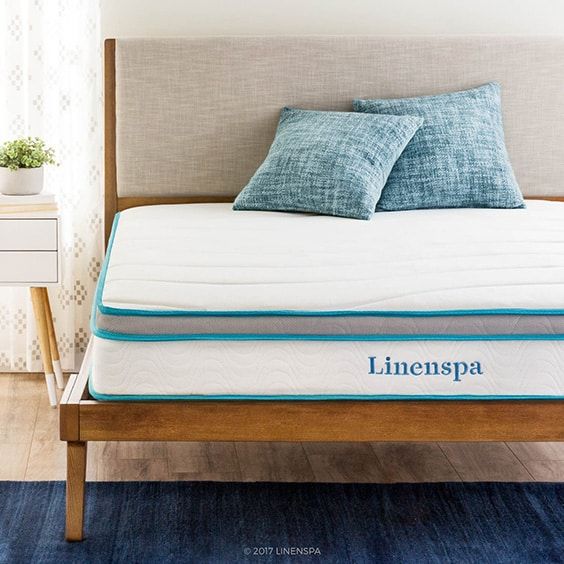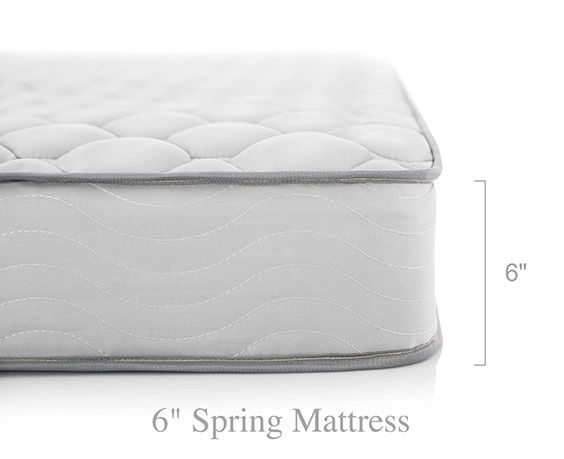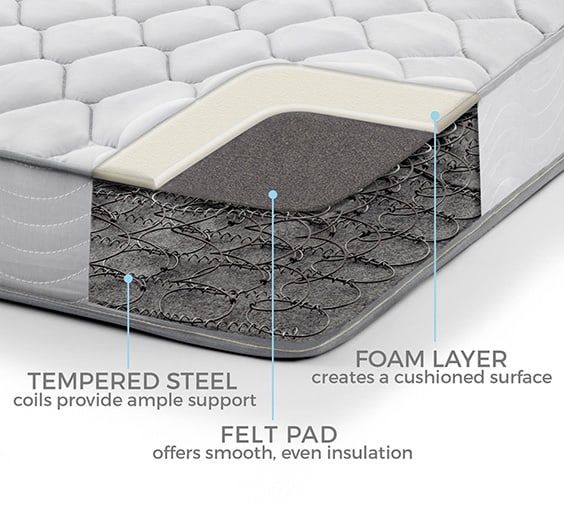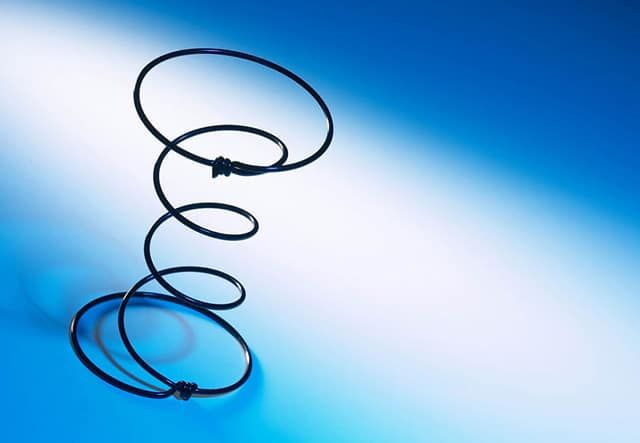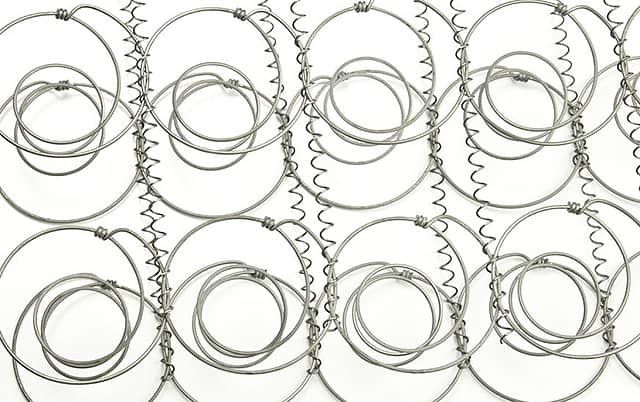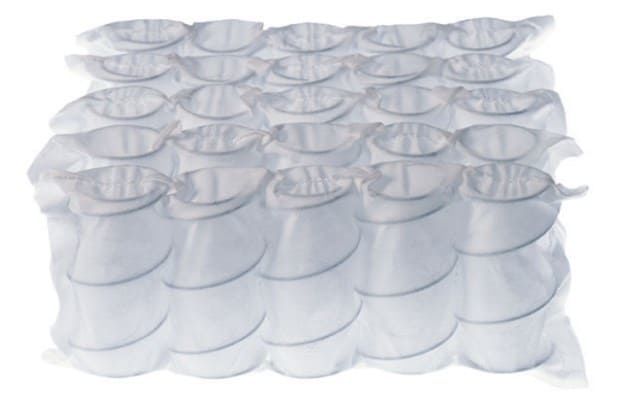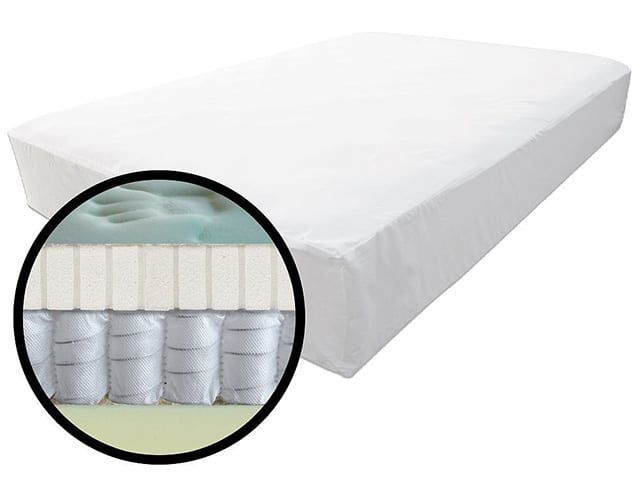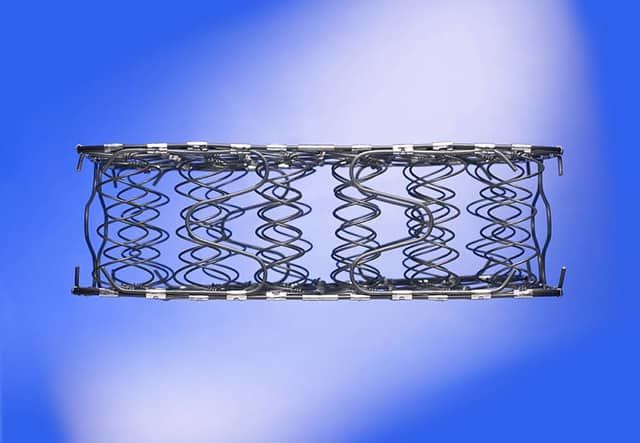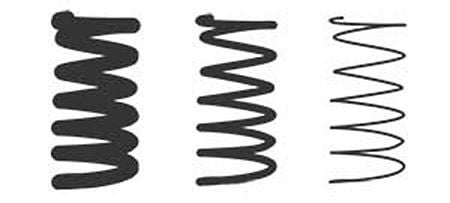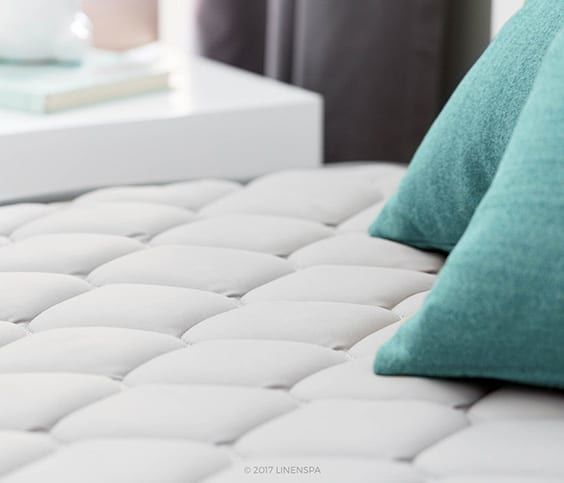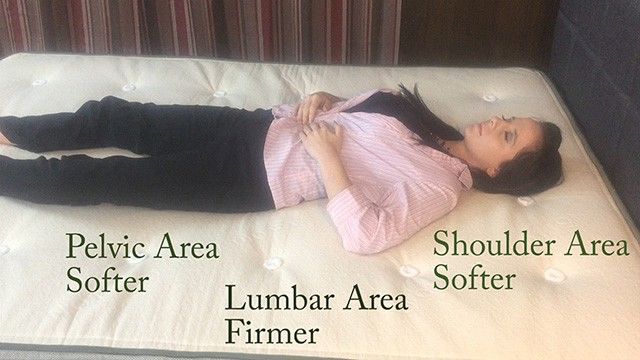Did you realize that the mattress you choose could log as many as 30,000 hours during the course of its lifetime? That’s 750 workweeks! Here at The Sleep Judge, we strive to ensure you’re able to make the most of this valuable time by helping lead you toward the option that will work best for you.
If you’re considering the purchase of an innerspring product, then you are likely looking for one that sleeps cool, features high durability, and can typically be purchased at a good price. However, before you click “Buy Now,” I encourage you to better understand features you may have overlooked to best ensure you’re making the right choice with our comprehensive innerspring mattress buying guide.
What Is An Innerspring Mattress?
Innerspring sleep products are, by far, the most popular, and they have been long developed and enhanced to provide consumers with more efficient manufacturing processes that keep costs low. You can typically acquire one of these products at a high quality and lower price than other mattress types out there. Furthermore, since they’ve been on the market so long, manufacturers have discovered new and improved ways to accommodate various sleeping preferences.
Innerspring Evolution
Often we find in mattress technology that ideas are developed for use outside of sleep, and it’s later discovered that they would work well on a mattress. The steel coil spring was invented and first patented in 1857 for use in chair seats. Eight years later, the first coil spring mattress was patented.
Not surprisingly, shortly afterward in 1871, Heinrich Westphal of German introduced the innerspring mattress. Sadly, he passed away before he ever got to see any of the profits of his efforts and was living in poverty. I’m sure he’d be impressed with himself if he could see how things turned out!
The innerspring mattress really took off during the 1930’s. During this time, sales in both the United States and Canada spiked. This led to further development in this technology, and pocketed coils were introduced during this active decade. Since then, creative manufacturers have put in hours of time innovating this product to cater to various sleepers.
Hybrid Products
One such way manufacturers can get creative while using innerspring technology is to provide a hybrid product that can cater to specific people. There are hundreds of combinations out there using various materials such as foams and latex. If you think this sounds like a good option to explore, take a look at our comprehensive hybrid mattress guide.
I recently had the chance to review one such product, and this was the Avocado mattress. This product combined four inches of Dunlop latex in the comfort layer, an eight inch innerspring unit, and a final one inch layer of high-density Dunlop latex. This particular combination offered a firmer setting ideal for those who may carry a lot of weight or suffer with pressure points. There are too many combination possibilities to talk about them all, but, a few key things to look for when you browse these options include:
- Coil Count (we’ll go more in-depth on this in a moment)
- More isn’t necessarily better
- Higher coil count generally equals a firmer product
- Look for products that feature twice tempered steel.
- Material durability
- Measured in density
a. Memory foam- 4-5 pcf
b. Polyfoam- 1.8+ pcf - Firmness
- Measured using indentation load deflection
a. Soft – 12 lbs
b. Medium- 25-31
c. Hard- 50
Support Coil Types
I think I’ve made it pretty clear that there are many different types of innerspring mattresses out there, and they feature varying degrees of quality. So, I want to go ahead and cover four key players, and we’ll discuss them in order of low to high quality.
Bonnell Coil
Bonnell coil is another option, and these products feature an hourglass shape where the middle of the product is thinner and therefore compresses with soft pressure. While Bonnell coil products are typically the least expensive, they also often have the least durability. Since they can be produced using different wire gauges, there are various firmness levels you can choose from. However, because of their differential design, the firm versions are usually better.
PROS
- Inexpensive
- Very popular among budget mattress shoppers
- Choice in firmness level
CONS
- Low durability of around 3-5 years of nightly use
Who’s It For?:
Bonnell coil mattresses offer advantages for dorm life, guest innerspring beds, and for those with small children who will outgrow the bed within its estimated lifetime. Just make sure you’re prepared to make another investment in a short time.
Continuous Coil
This is a simple and inexpensive option, and these products are produced using a continuous wire made into rows. These rows are attached using helicals.
PROS
- Inexpensive
- Very firm support system
- Can be a good choice with thicker comfort layers
- Helicals help prevent motion transfer
CONS
- Since they are connected to neighboring coils, they are less able to contour your unique body shape.
Who’s It For?:
If you’re in the market for a product that will offer an affordable price, a continuous coil mattress could be the right choice. It’s also provides increased support in the middle of the mattress where your body needs it most, so this could be a great solution if you suffer from lower back problems.
Offset Coils
Offset coils are of a higher quality level, and they work using a hinged and shaped wire on the top that creates a hinging effect as it joins the coil next to it under soft pressure. However, when more pressure is applied, the main body of the coil is engaged. There are different versions of offset coils on the market, and a few of these include:
- Free arm offset
- Double offset (squared-off section on each side of coil)
- One-sided extension
- Two-sided extension
- Top and bottom hinge
While prices vary, this is typically the second most expensive coil type, and it features a few pros and cons to keep in mind.
PROS
- Suitable for either a progressive or a differential mattress design
- Shares load better than pocketed coils
CONS
- Can be expensive for those on a budget
Who’s It For?:
If you’re looking for a mattress that offers a lower firmness in the support layer, offset coils can be a great option to look into further.
Pocket Coils
If you need a product with a wide response range, you may choose to make the added investment in a pocket coil product. This means they offer a plusher firmness upon initial compression followed by an increase in firmness on deeper compression. As you shop, it’s important to keep in mind that, while you can find inexpensive options, these are often imported. While not always the case, those manufactured in North America typically feature higher quality over Asian imports.
Pocketed coils, since they are wrapped individually, also help you if you have a sleeping partner. If you’ve ever been awakened when they move, you know what I’m talking about! These products typically score well on motion isolation. Furthermore, pocketed coils are able to contour well with the body due to the individual wrapping.
PROS
- Good ability to contour your body
- Good for use with different comfort layers such as natural fibers
- Good motion isolation capability
CONS
- Cheaper options can prove less durable, often the case with imports
Who’s It For?:
This is a great choice if you are prepared to make a larger investment in your mattress product and expect a higher degree of durability. It can also prove to be a great option for those who carry a lot of weight. I had the pleasure of trying out a pocketed coil mattress when I reviewed Avocado’s queen-size product.
Innerspring Comfort Layers
The innerspring unit itself isn’t the only aspect you’ll want to analyze as you do your mattress shopping. The comfort layers are highly important, and they will largely dictate how well you’re able to enjoy the mattress as a whole. There are a variety of choices on the market, so let’s take a look at some of the most popular.
Microcoils
While innersprings are not generally a good choice in the comfort layer as they aren’t comfortable to sleep on, there is one exception to this rule. Microcoils are a popular choice among manufacturers, and they are designed specifically for use in the comfort layers.
You can typically expect them to be made from flexible and thinner wires, and they usually have a coil count of at least 800. Their thickness levels are usually lower in order to accommodate Eurotops and boxtops. Most products will feature a thin foam layer on top of the microcoil layer in order to reduce the feel of the individually wrapped coils. Since they often feature an innerspring support base, you may come across this option referred to as “coil on coil.”
PROS
- Offers more comfort and pressure relief than other innerspring options
- Cheaper than many foam and latex options
- Good point elasticity
- Good durability
CONS
- Can be difficult to acquire if you’re on a tight budget
Who’s It For?:
A product featuring microcoils can offer many benefits for those who carry a lot of weight or suffer with pressure points. It’s also an investment that features good durability, so this is often a great option for those in the mid-range budget level.
What Else to Look for in an Innerspring Mattress
Aside from looking for the right type of innerspring unit for your needs, there are other areas you need to know how to consider. Let’s take a look at our coil guide to help walk you through the process.
Coil Count
The question you’re probably asking yourself is, “How many coils make a good mattress?” This is a great question to ask as coil count can offer an increase in overall comfort and support. For 50 years, 800 coils for a queen-sized product has been the standard. However, there are products that make a point of mentioning they have a much higher coil count. More isn’t always better, however. In many cases, products featuring coil counts much higher than the standard don’t offer a noticeable difference in comfort and support. However, there are some minimum limits I’d stick to as you shop:
- Full- 300
- Queen- 400
- King- 480
If you come across a product with a coil count less than these minimum amounts, I’d either steer clear or expect to experience a difference in overall support, comfort, and longevity.
Coil Gauge
Something else that’s important to consider is the coil gauge, and this number represents the thickness of the coil in your innerspring mattress. The right coil count for you will have a positive impact on comfort level and durability.
If you prefer a softer mattress, than a higher gauge will provide you what you’re looking for. However, lower gauges typically last longer. I’d recommend those who carry a lot of weight to look for a lower gauge as this will offer more pushback and support. It’s crucial to keep in mind that, the lower the gauge number, the thicker it is, so definitely keep that in mind as you shop.
A good rule of thumb is to look for a product with a coil gauge between 12 to 15. If you prefer a plusher product, aim more toward 15 and shoot closer to 12 if you would rather enjoy a firmer experience.
Layer Above the Springs
The innerspring is built to control how deeply you sink into the mattress with consideration of the various body proportions out there. They are also able to help the upper comfort layers more effectively conform with your body. Because of this, they are popularly instituted into the progressive design with thinner layers of material on top of them. Therefore, you need to have a basic understanding of materials like foams and latex.
You’ll typically find more than one layer of foam above the innerspring, and this is to add variety in the type of product you’re able to pinpoint. We discussed indentation load deflection and how it impacts firmness. However, this would be representative of the product as a combined unit. You’ll typically find lower ILDs on the comfort layer with a much higher ILD at the base.
Zoning
Some innerspring products take proper contour to another level by offering zoning. There are three areas of the body which are most difficult to accommodate, and these would include the shoulder, lumbar, and pelvic areas. When you find a product that offers zoning, you’ll get to enjoy an increased firmness in the middle to support the lumbar area and a softer top and bottom for your hips and shoulders. If point elasticity is high on your priority list, this may be something you want to look out for. An excellent product I tried out with this advantage was the Avocado mattress. I encourage you to check out my full review if you think this may be something you’re interested in.
Is Innerspring Right for You?
An innerspring mattress could be a great fit for you. With so many different types and comfort layer possibilities, there’s likely a product out there that would work well for you. With so many budget-friendly options, it makes it easy to find a quality product at a price you can afford. You can further take advantage of the fact that, since innerspring technology has been around so long, there are many innovations you can take advantage of.
I would recommend an innerspring for those who carry a lot of weight and/or suffer with pressure points. It can also prove to be a great option when it comes to proper heat transfer at a cost you can afford.
I hope you’ve learned a thing or two about this option and are one step closer to finding the perfect sleep products to meet your needs. It’s our goal that you make the most of an investment that ultimately has an impact on your overall quality of life. If you have any questions or insights, we’d love to hear them! Please leave them below, and we’ll get back with you to help point you in the right direction.
